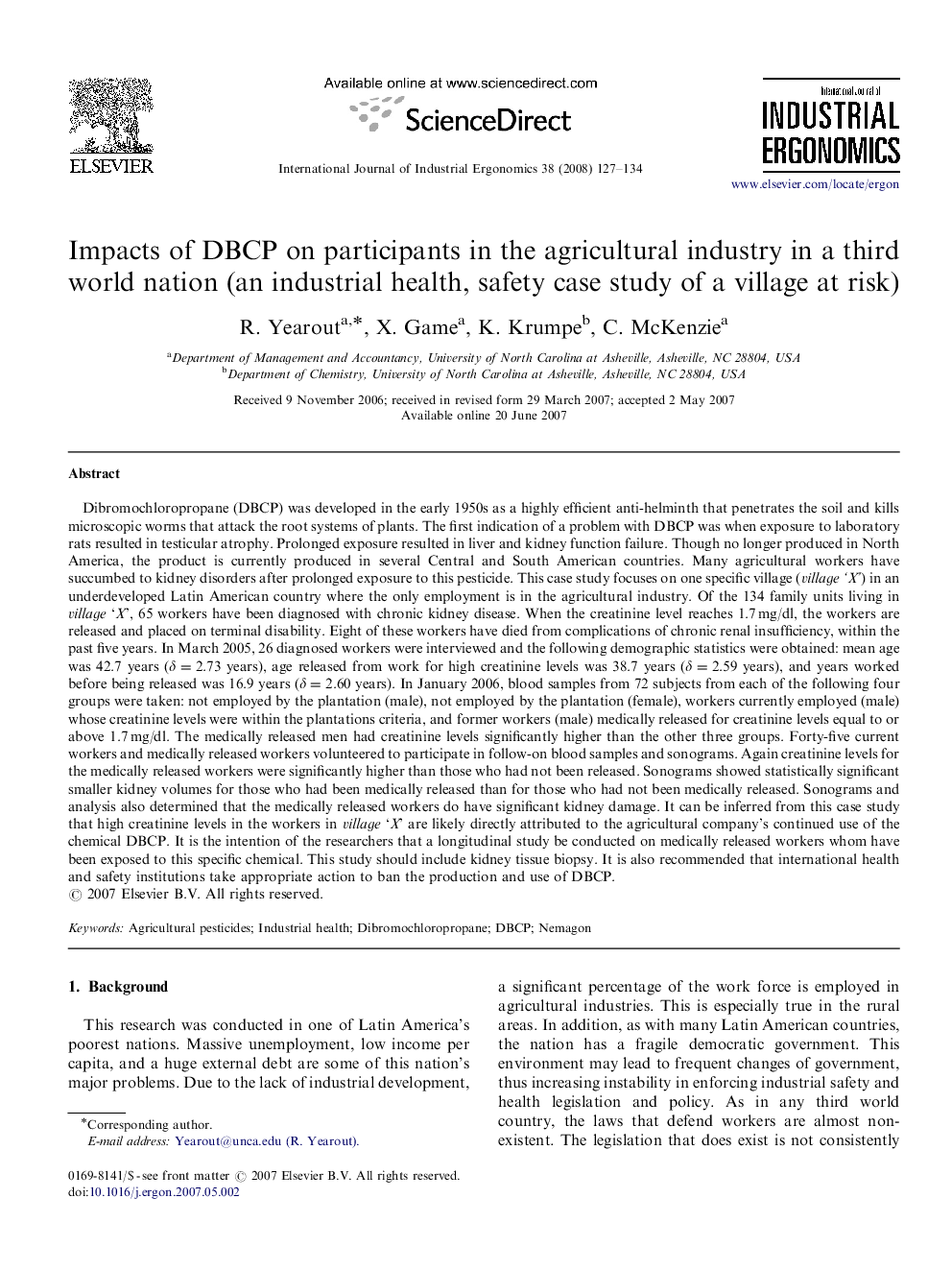| کد مقاله | کد نشریه | سال انتشار | مقاله انگلیسی | نسخه تمام متن |
|---|---|---|---|---|
| 1096847 | 1487472 | 2008 | 8 صفحه PDF | دانلود رایگان |

Dibromochloropropane (DBCP) was developed in the early 1950s as a highly efficient anti-helminth that penetrates the soil and kills microscopic worms that attack the root systems of plants. The first indication of a problem with DBCP was when exposure to laboratory rats resulted in testicular atrophy. Prolonged exposure resulted in liver and kidney function failure. Though no longer produced in North America, the product is currently produced in several Central and South American countries. Many agricultural workers have succumbed to kidney disorders after prolonged exposure to this pesticide. This case study focuses on one specific village (village ‘X’) in an underdeveloped Latin American country where the only employment is in the agricultural industry. Of the 134 family units living in village ‘X’, 65 workers have been diagnosed with chronic kidney disease. When the creatinine level reaches 1.7 mg/dl, the workers are released and placed on terminal disability. Eight of these workers have died from complications of chronic renal insufficiency, within the past five years. In March 2005, 26 diagnosed workers were interviewed and the following demographic statistics were obtained: mean age was 42.7 years (δ=2.73 years), age released from work for high creatinine levels was 38.7 years (δ=2.59 years), and years worked before being released was 16.9 years (δ=2.60 years). In January 2006, blood samples from 72 subjects from each of the following four groups were taken: not employed by the plantation (male), not employed by the plantation (female), workers currently employed (male) whose creatinine levels were within the plantations criteria, and former workers (male) medically released for creatinine levels equal to or above 1.7 mg/dl. The medically released men had creatinine levels significantly higher than the other three groups. Forty-five current workers and medically released workers volunteered to participate in follow-on blood samples and sonograms. Again creatinine levels for the medically released workers were significantly higher than those who had not been released. Sonograms showed statistically significant smaller kidney volumes for those who had been medically released than for those who had not been medically released. Sonograms and analysis also determined that the medically released workers do have significant kidney damage. It can be inferred from this case study that high creatinine levels in the workers in village ‘X’ are likely directly attributed to the agricultural company's continued use of the chemical DBCP. It is the intention of the researchers that a longitudinal study be conducted on medically released workers whom have been exposed to this specific chemical. This study should include kidney tissue biopsy. It is also recommended that international health and safety institutions take appropriate action to ban the production and use of DBCP.
Journal: International Journal of Industrial Ergonomics - Volume 38, Issue 2, February 2008, Pages 127–134